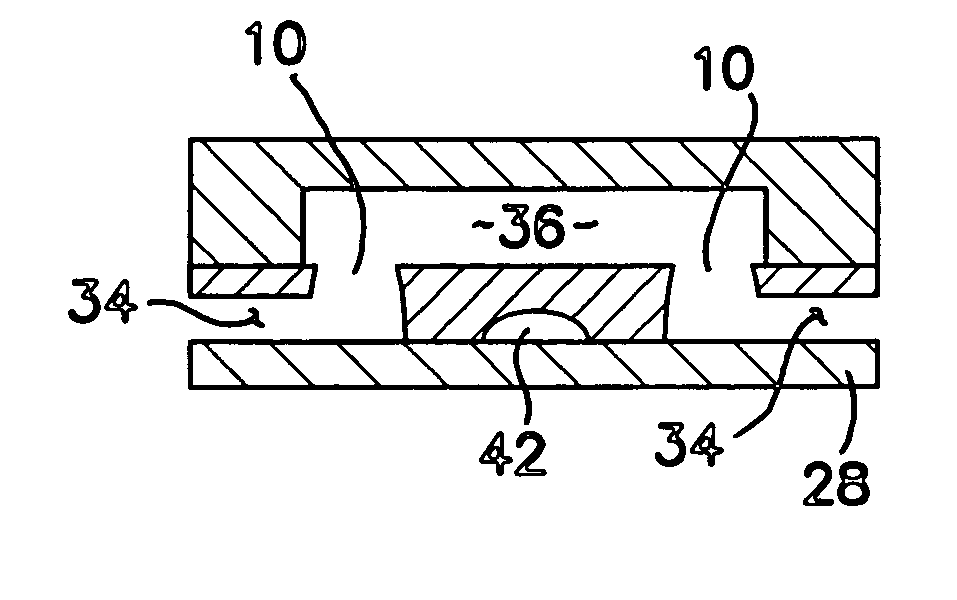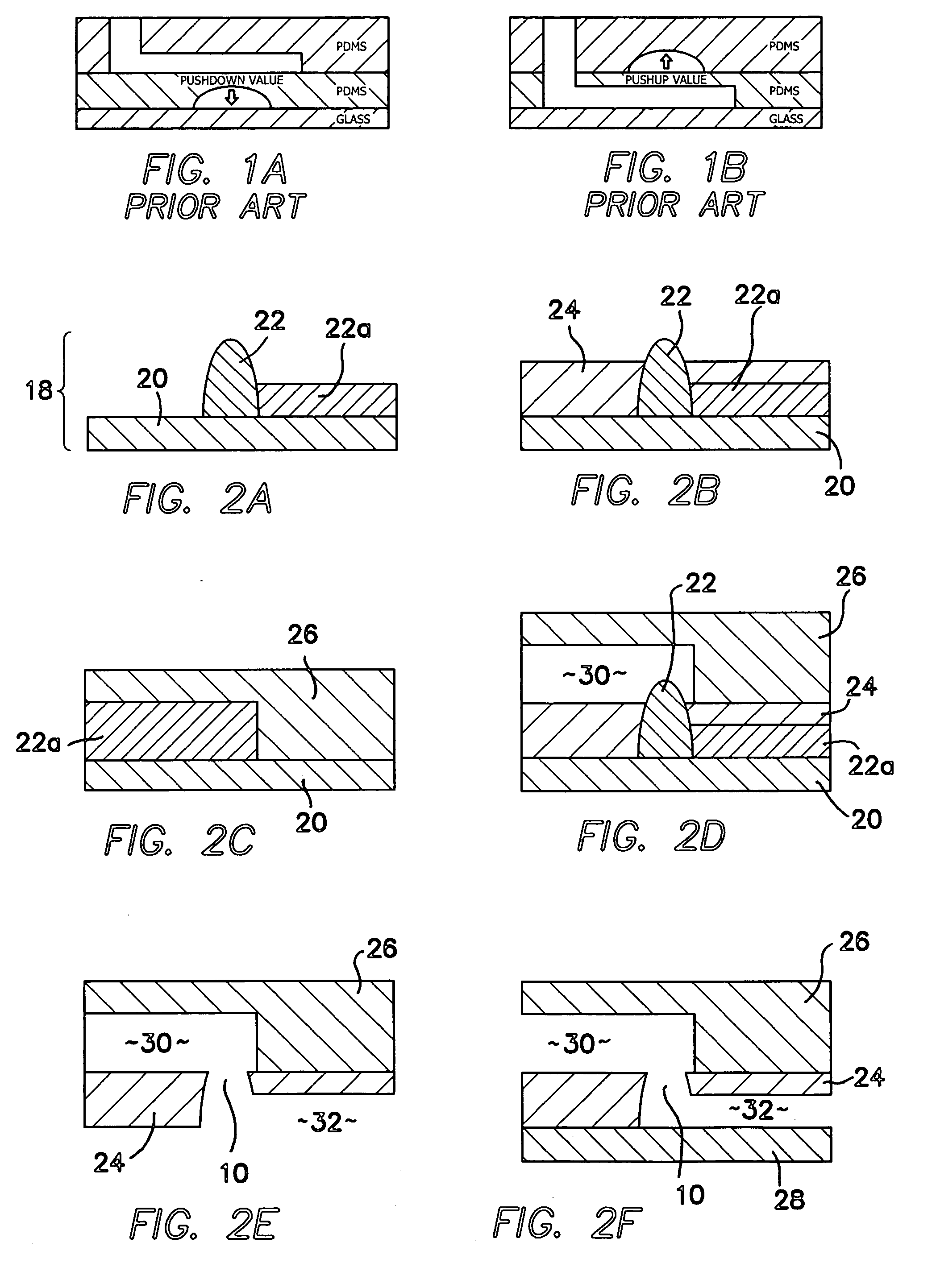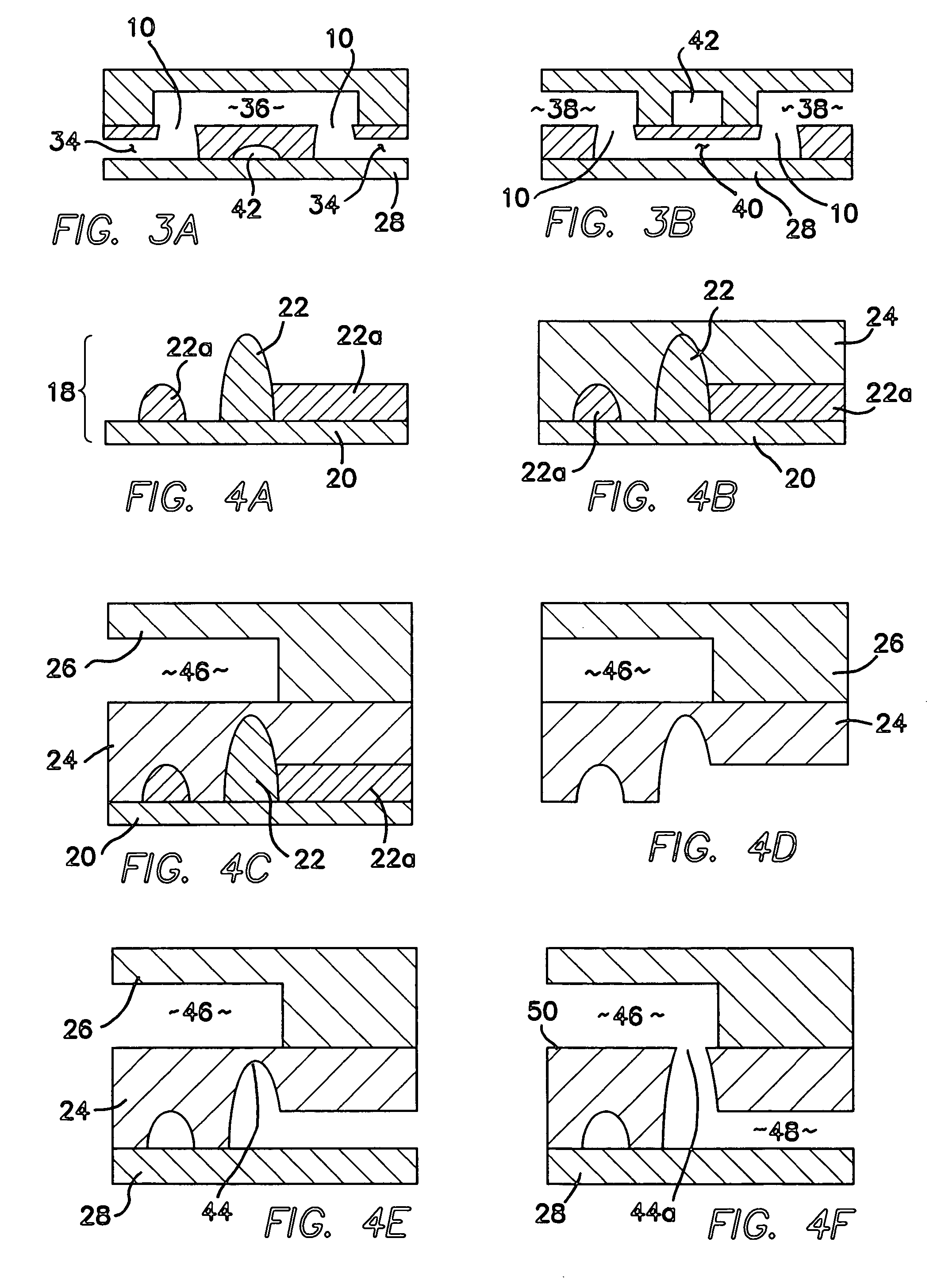Integrated microfluidic vias, overpasses, underpasses, septums, microfuses, nested bioarrays and methods for fabricating the same
a microfluidic structure and microfluidic structure technology, applied in the field of microfluidic structures and methods of fabrication of the same, can solve the problems of expanding the potential complexity of microfluidic architecture, increasing the maximal achievable complexity of the device architecture for both layers, etc., and achieve the effect of expanding the potential complexity of the microfluidic architectur
- Summary
- Abstract
- Description
- Claims
- Application Information
AI Technical Summary
Benefits of technology
Problems solved by technology
Method used
Image
Examples
Embodiment Construction
[0041] The illustrated embodiments include a method which comprises the steps of providing a first mold with a high and low features. A first layer is formed over the features. The high feature extends a predetermined height through the first layer to define a via or extends near to the first layer to define a membrane of predetermined thickness. The low feature defines a lower channel in the first layer which is communicated with the via or membrane. The second layer has an upper channel formed therein, so that the high feature extends into the upper channel in the second layer or is positioned adjacent to the upper channel in the second layer. The first mold is removed. The partially completed structure is assembled onto a substrate to result in a via, septum or microfuse formed between different, adjacent vertical levels in the multilayer microfluidic circuit, or the structure is assembled with a similarly prepared first layer to comprise multiple levels of vias, septums and / or m...
PUM
 Login to View More
Login to View More Abstract
Description
Claims
Application Information
 Login to View More
Login to View More - R&D
- Intellectual Property
- Life Sciences
- Materials
- Tech Scout
- Unparalleled Data Quality
- Higher Quality Content
- 60% Fewer Hallucinations
Browse by: Latest US Patents, China's latest patents, Technical Efficacy Thesaurus, Application Domain, Technology Topic, Popular Technical Reports.
© 2025 PatSnap. All rights reserved.Legal|Privacy policy|Modern Slavery Act Transparency Statement|Sitemap|About US| Contact US: help@patsnap.com



